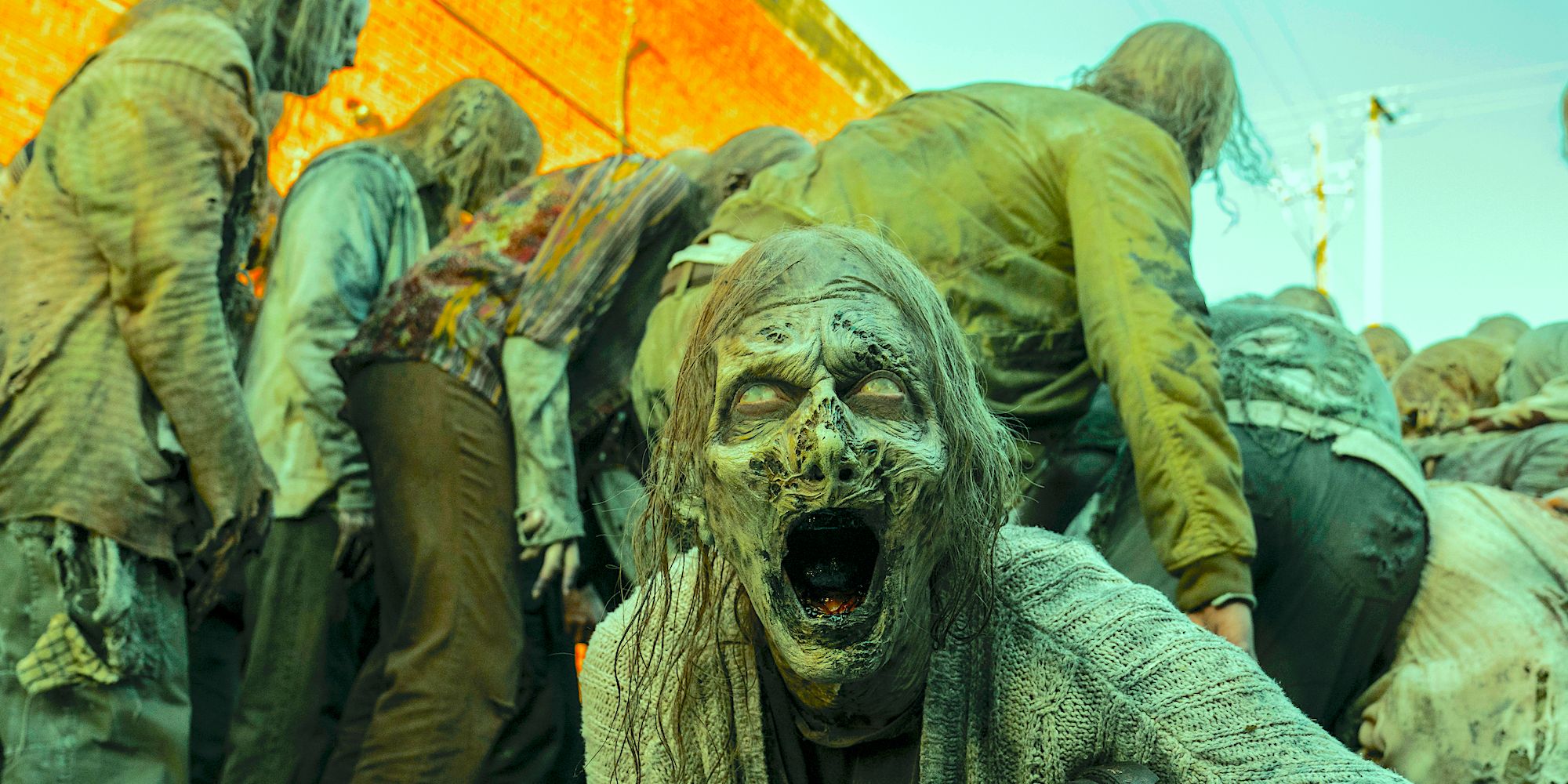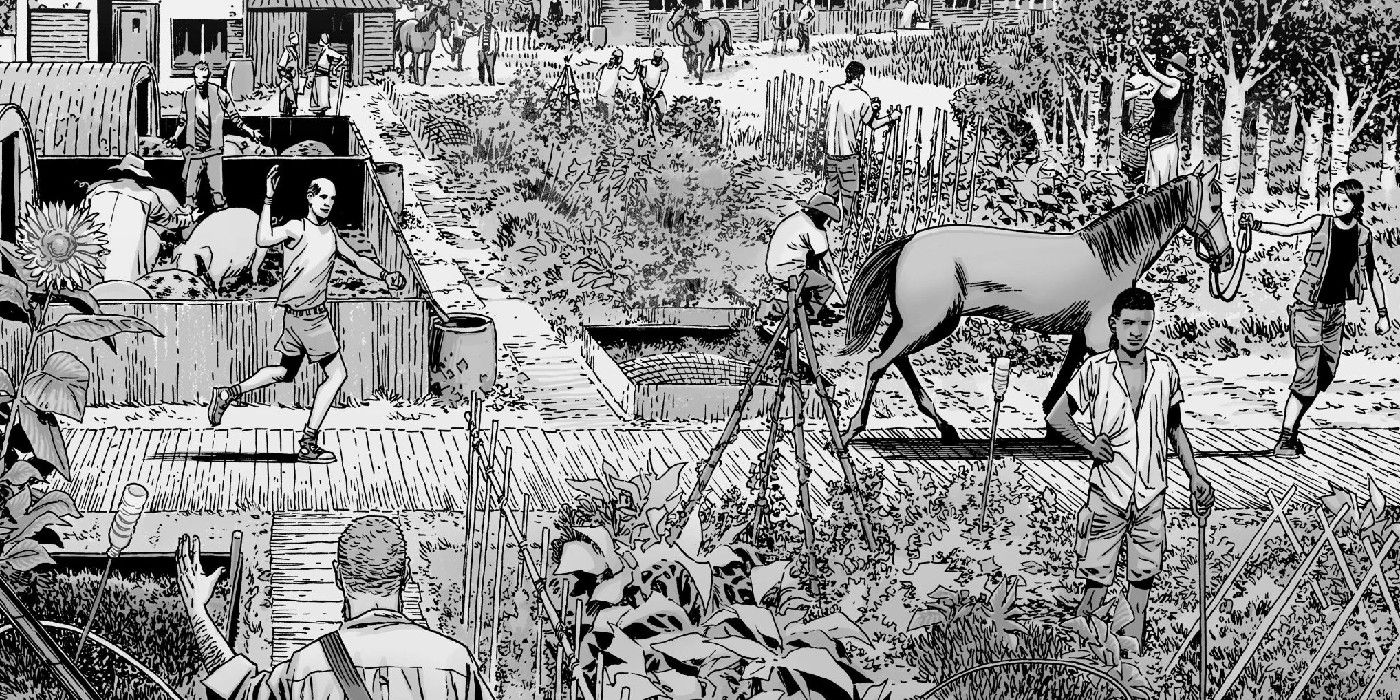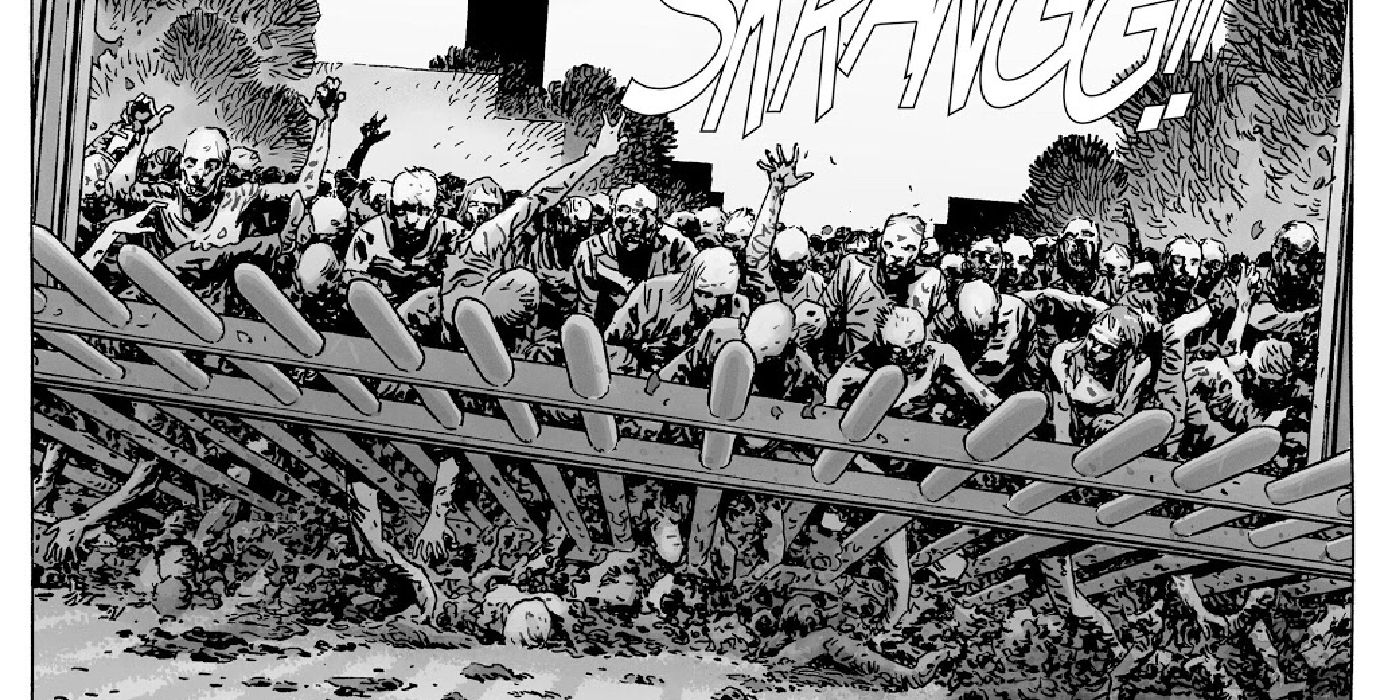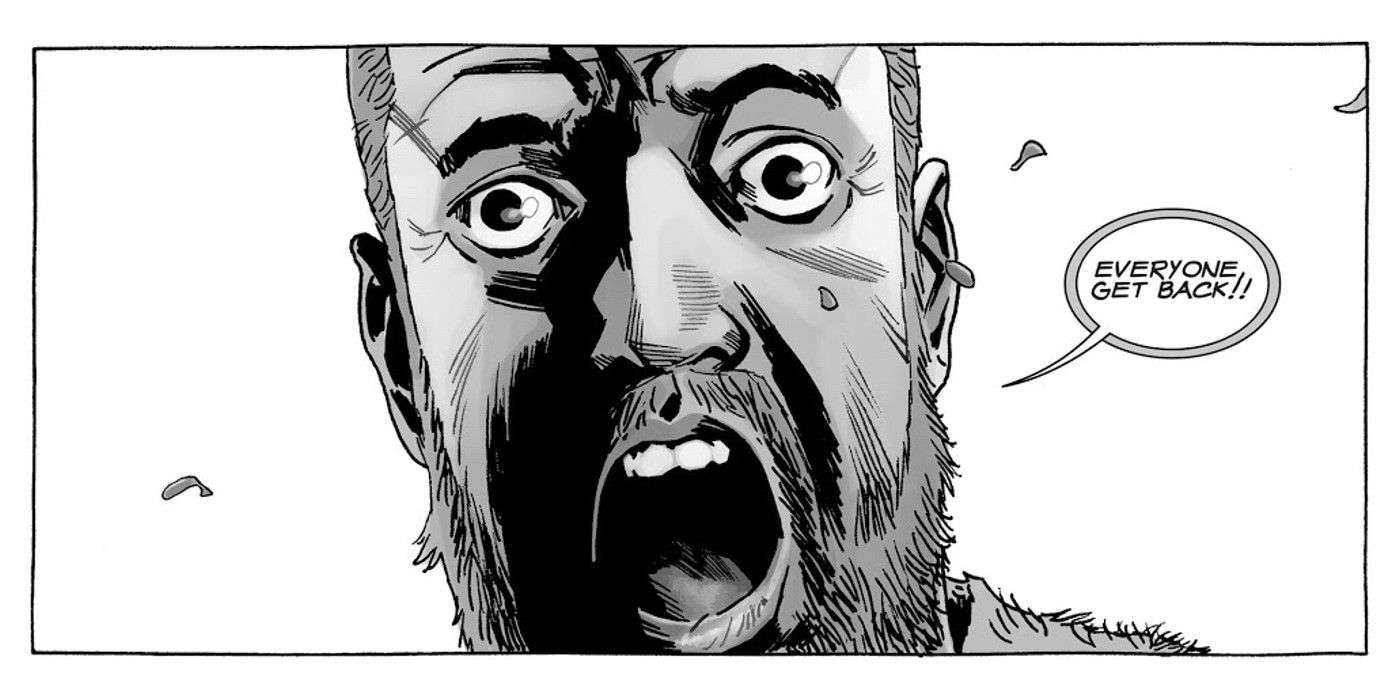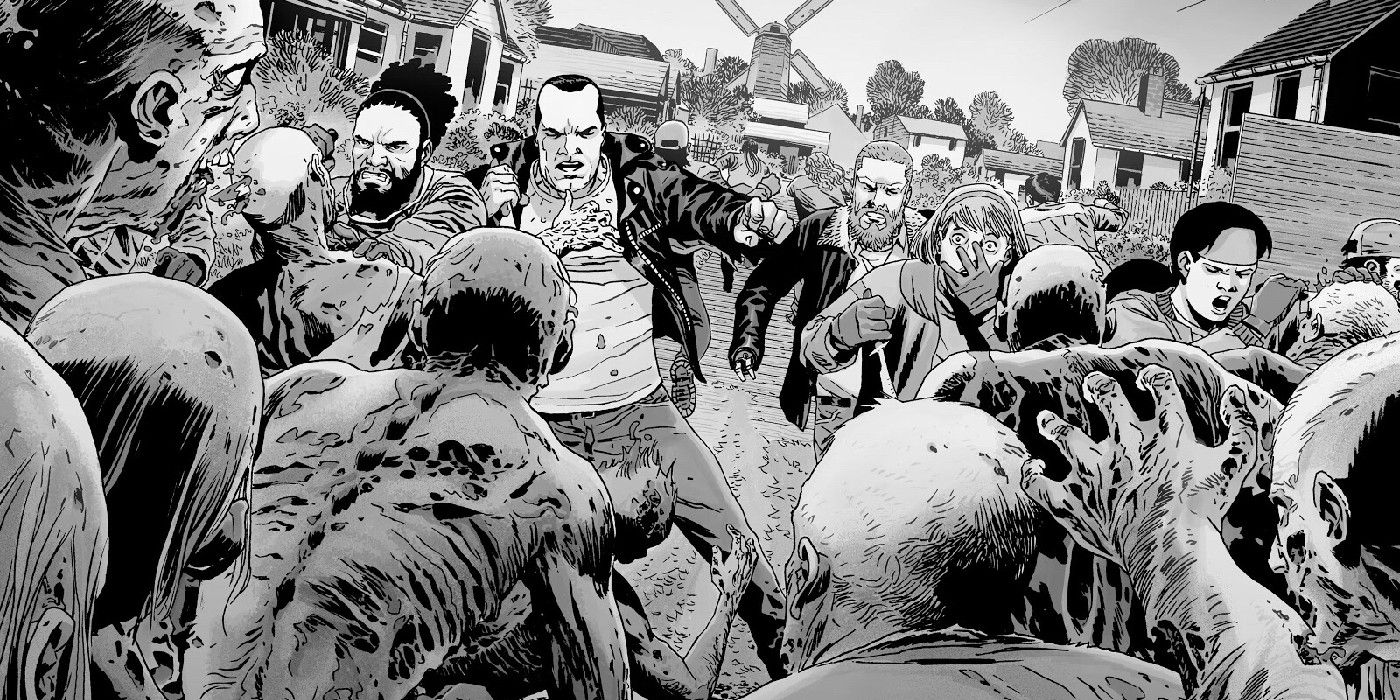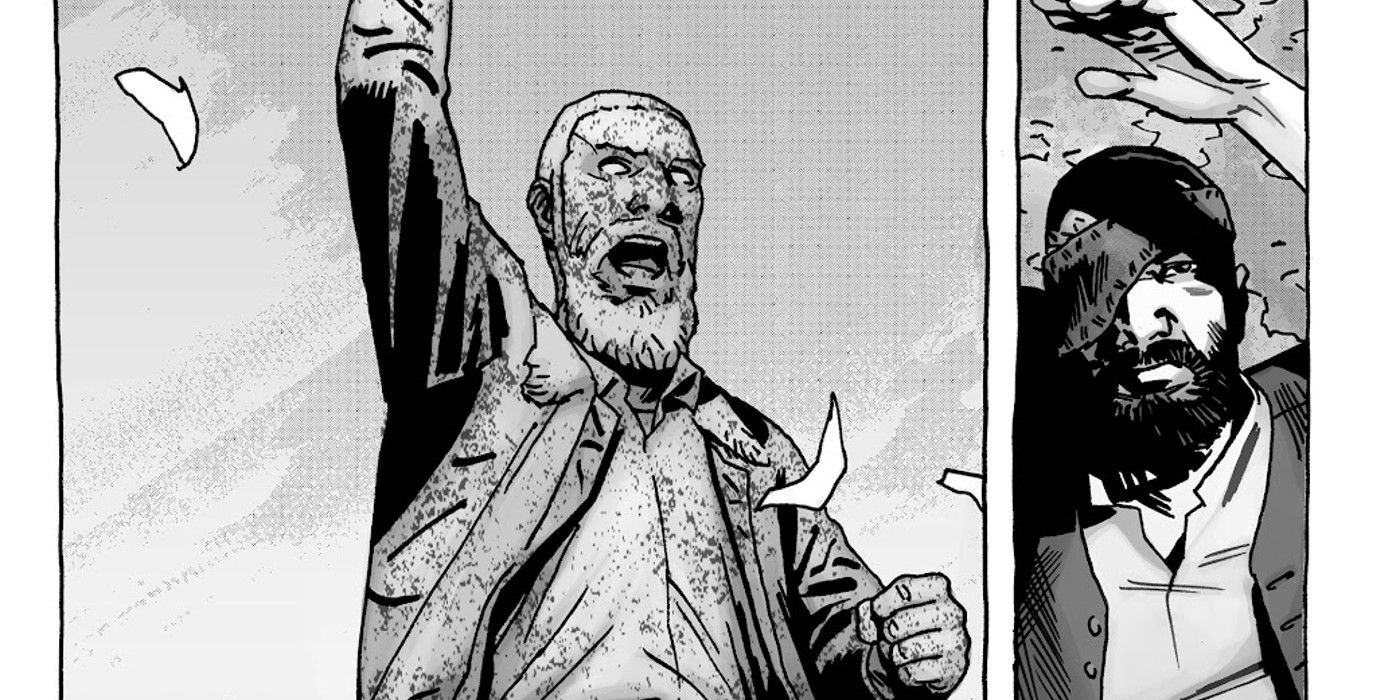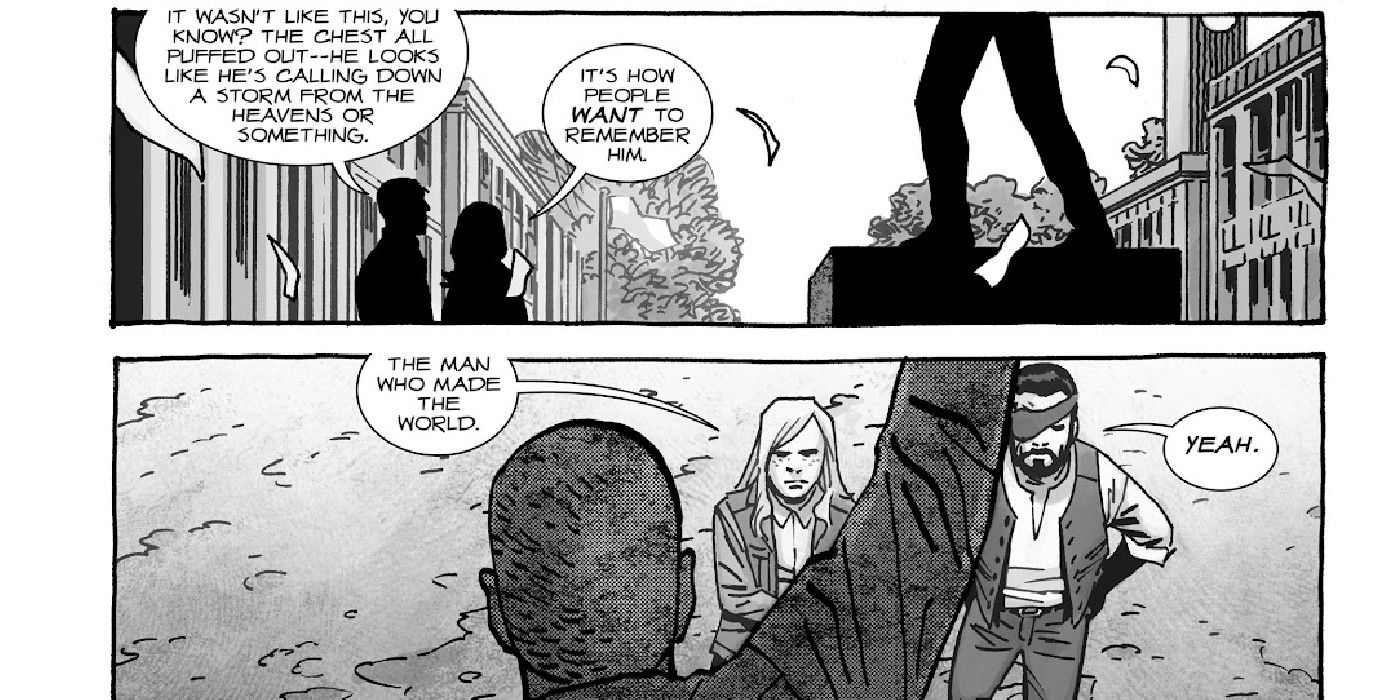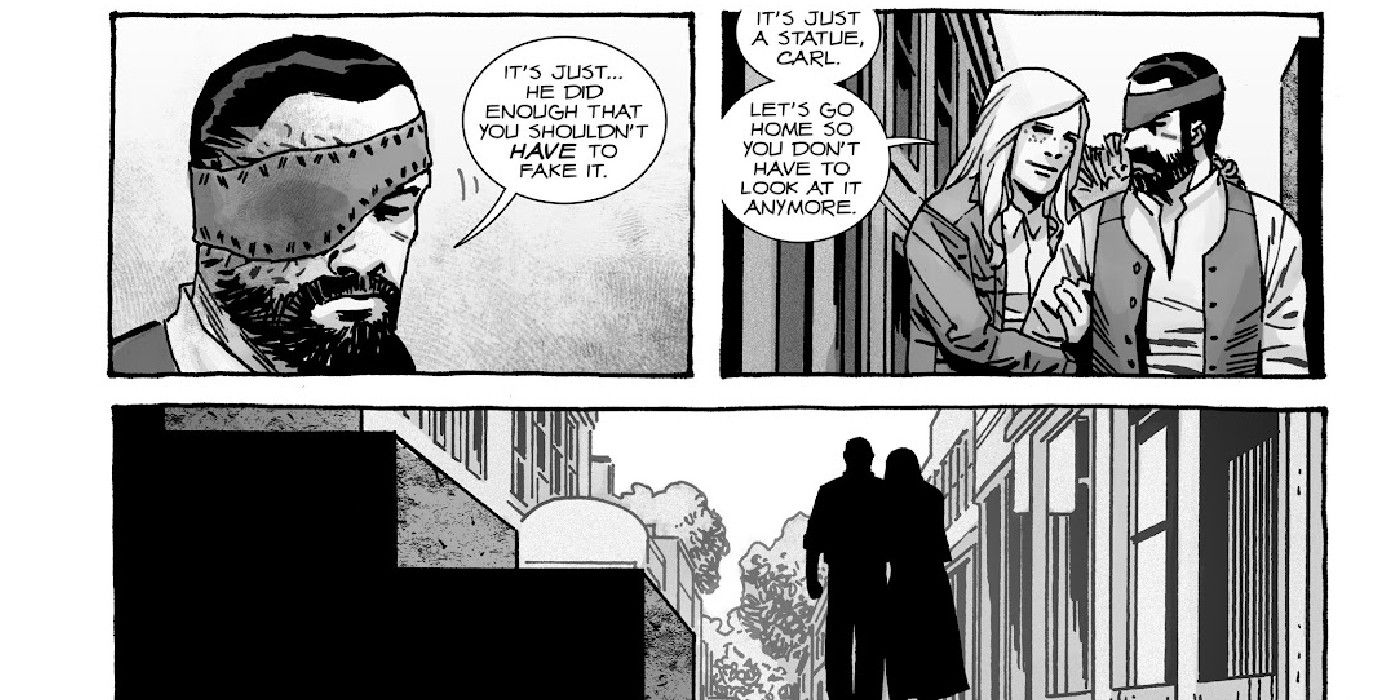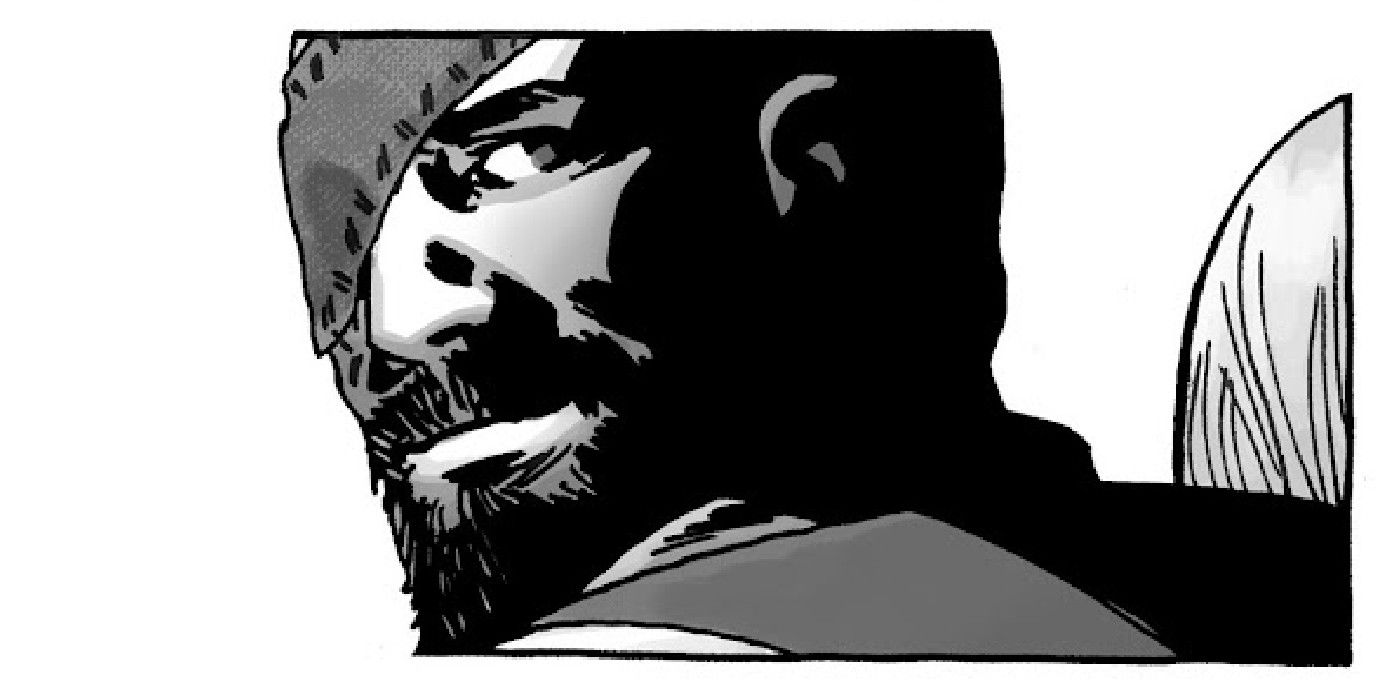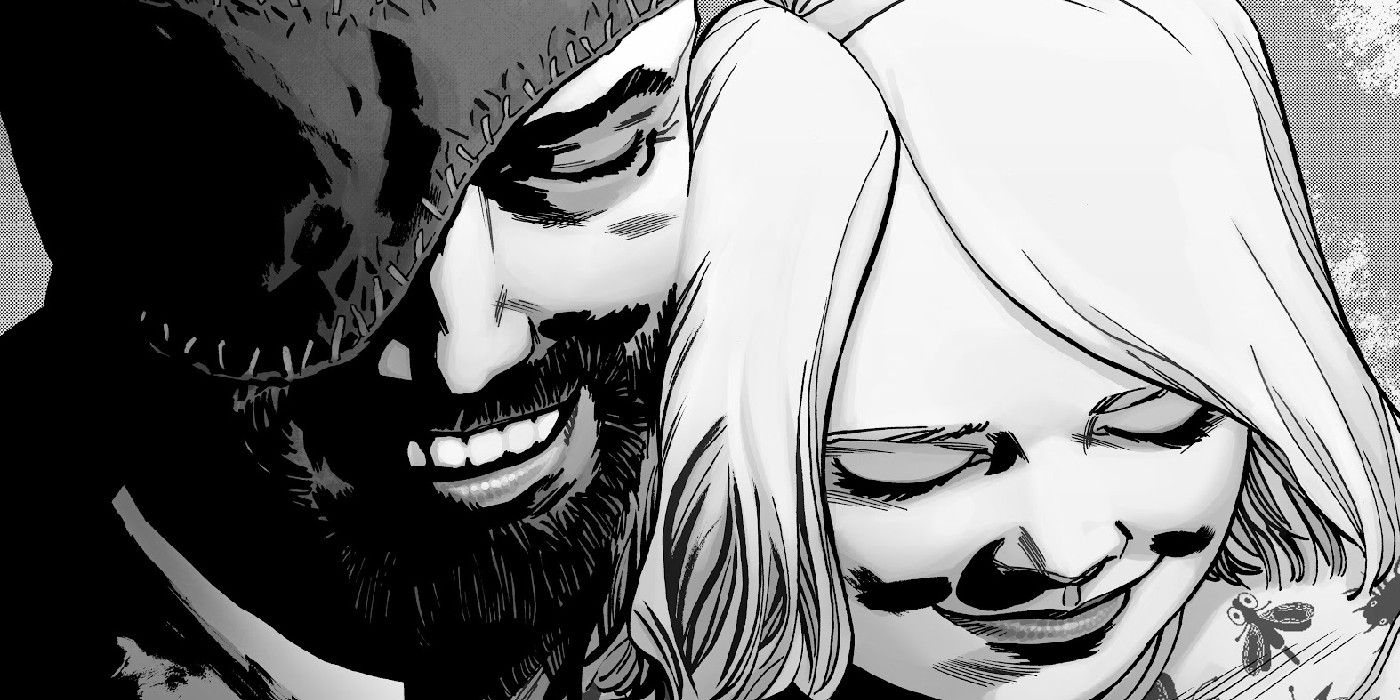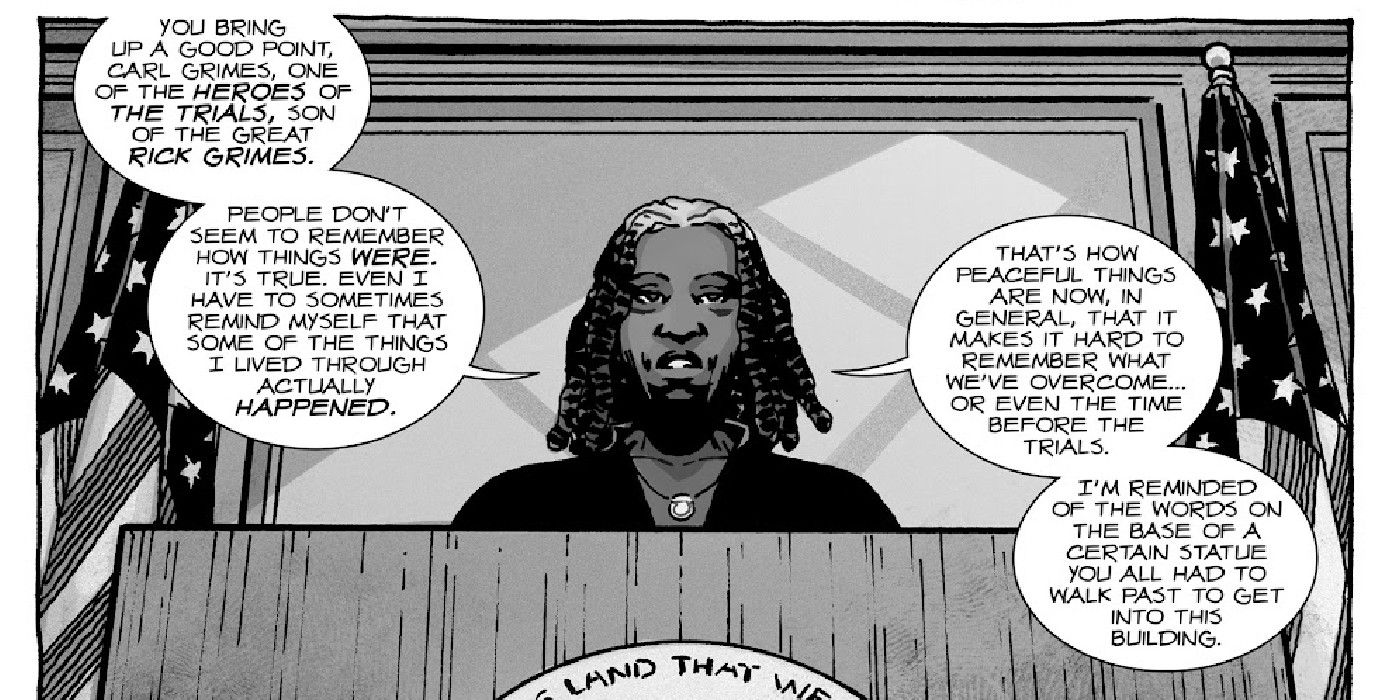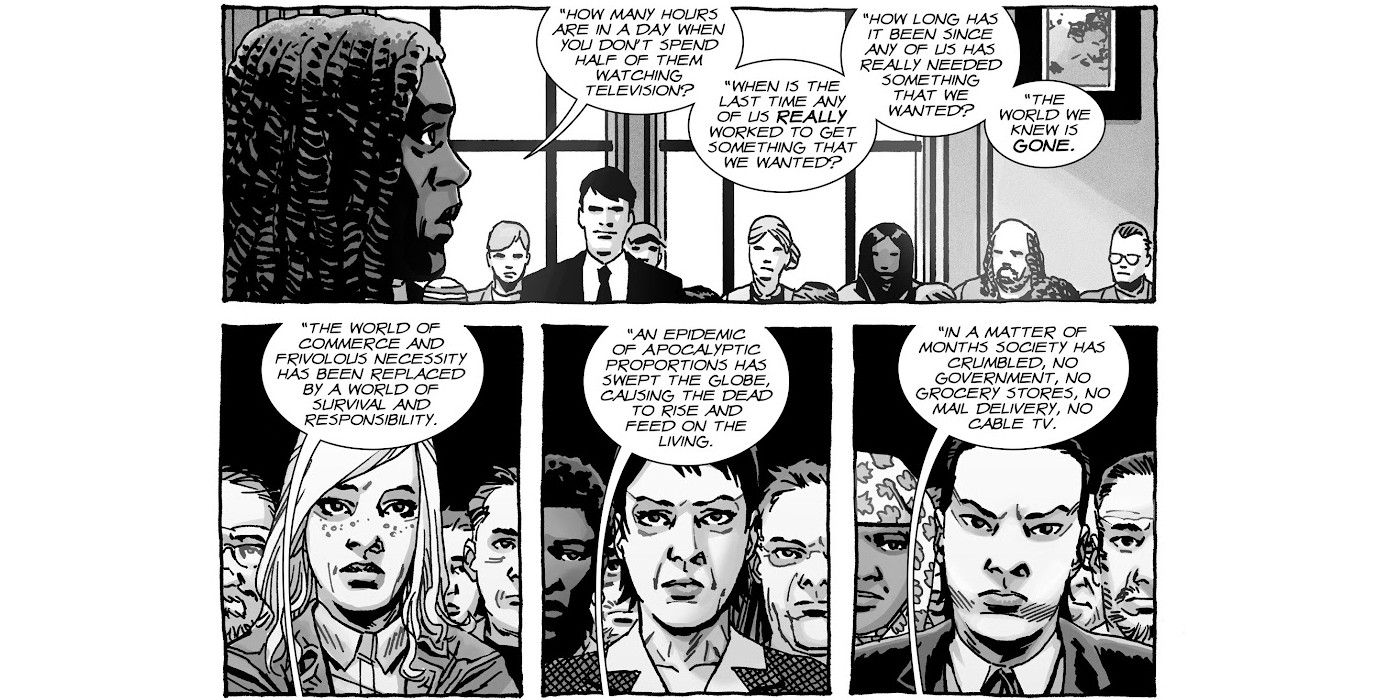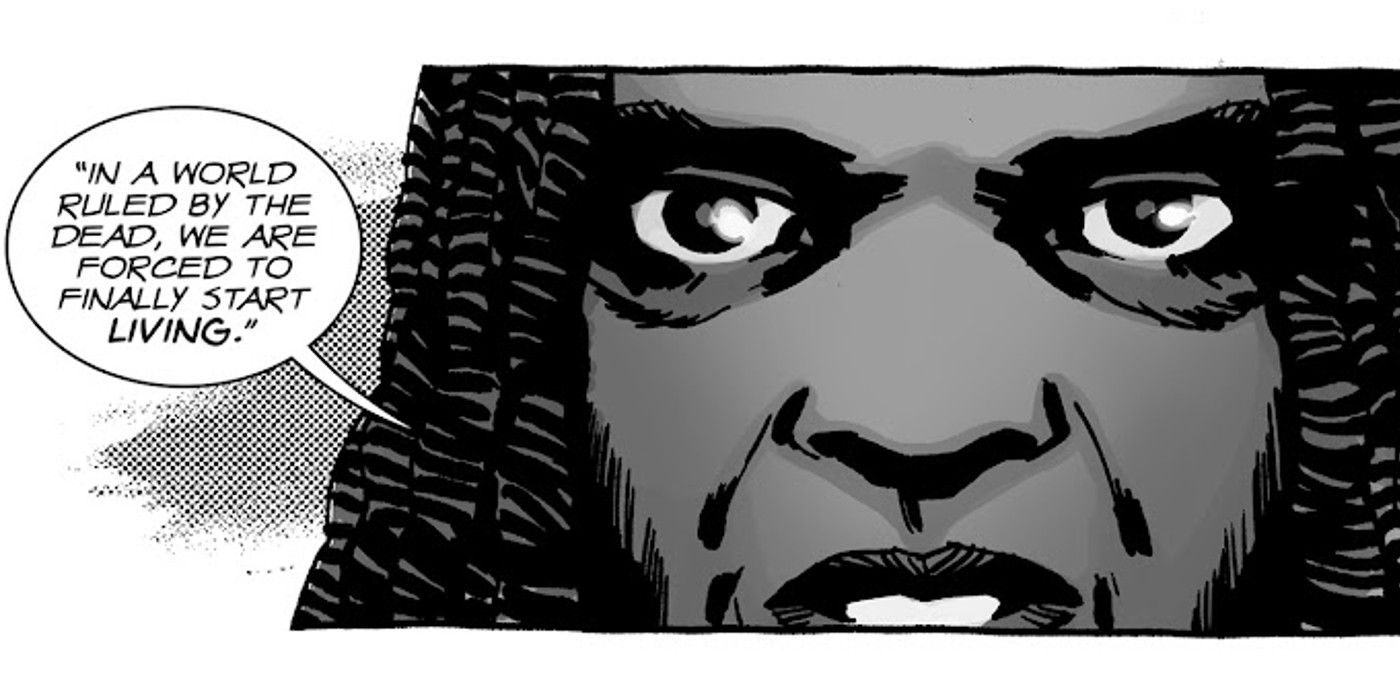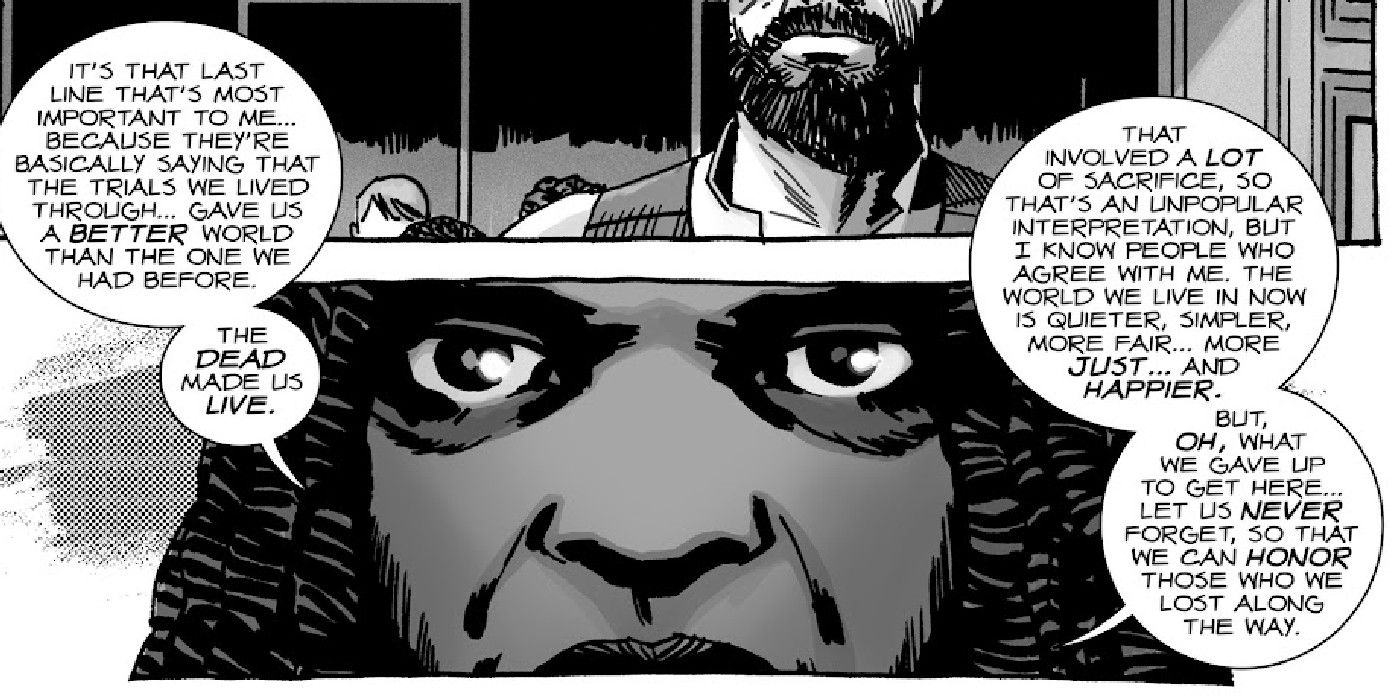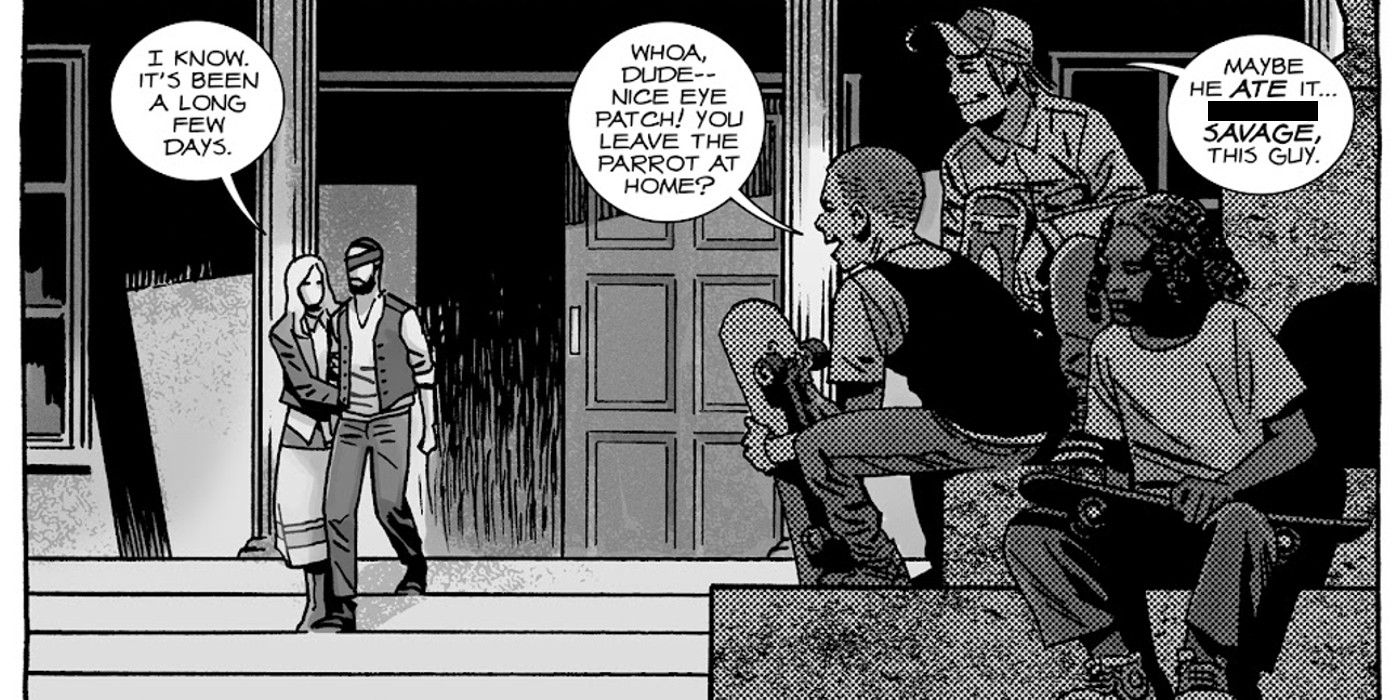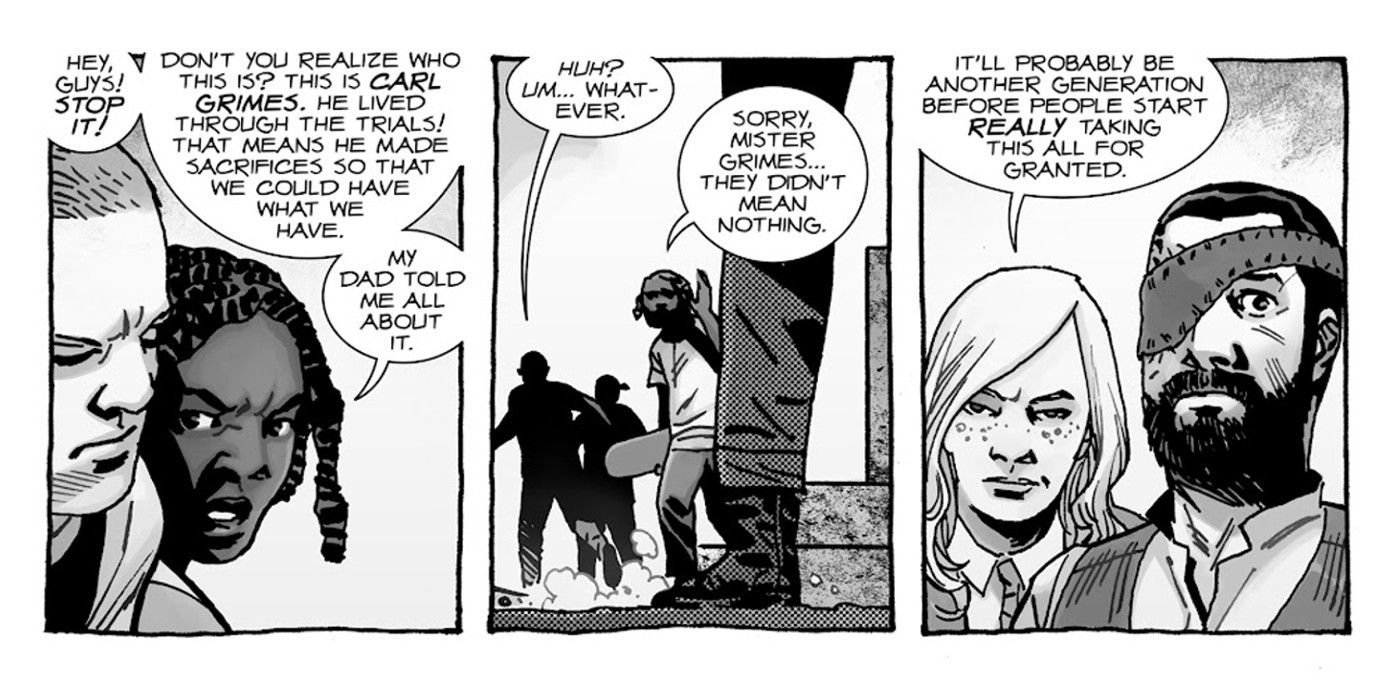Walking Dead’s creator has revealed his original plan for the franchise’s ending – a twist that would have totally changed the series’ meaning.
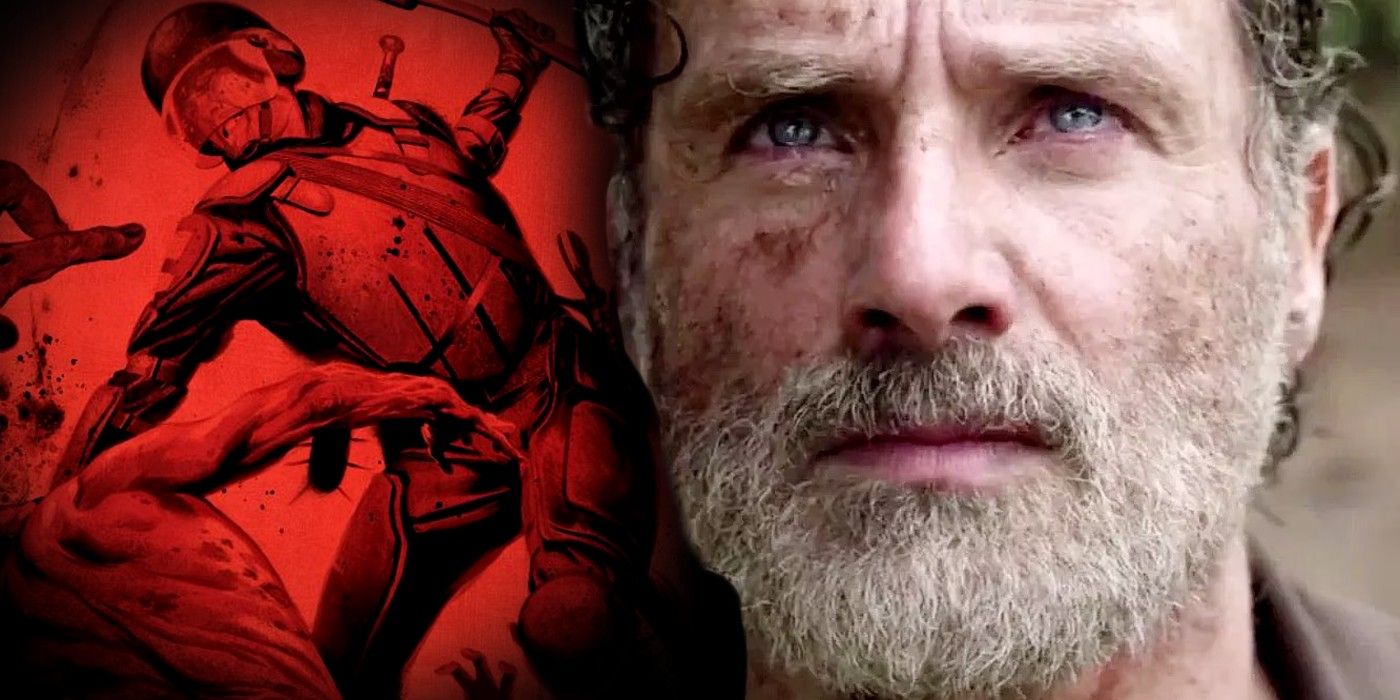
Robert Kirkman – the creator of mega-hit horror franchise The Walking Dead – just revealed how he originally planned for the franchise to end, and it would have changed the entire meaning of Rick Grimes’ fight to survive the undead apocalypse. In a fascinating reveal, one detail of the original ending actually lived on, but with a very different meaning.
Walking Dead star Andrew Lincoln knew how the franchise was meant to end, with Kirkman noting he was “nice enough to pretend it was cool.”
In The Walking Dead Deluxe #84 – a rerelease of Robert Kirkman, Charlie Adlard and Tony Moore’s original series with colors from Dave McCaig – Kirkman reveals that this issue marked the original point in the story where he’d intended to end the franchise. Conceived while writing issue #50, Kirkman planned to depict an inspirational speech from Rick Grimes before jumping ahead decades, transitioning to a statue of Rick which shows he became a folk hero to humanity, and helped them reach a point of stable civilization once again. However, Kirkman would then have had a zombie walk past the statue, pulling back to show Alexandria in ruins, suggesting thatdespite Rick’s temporary victory, humanity still eventually fell to the undead.
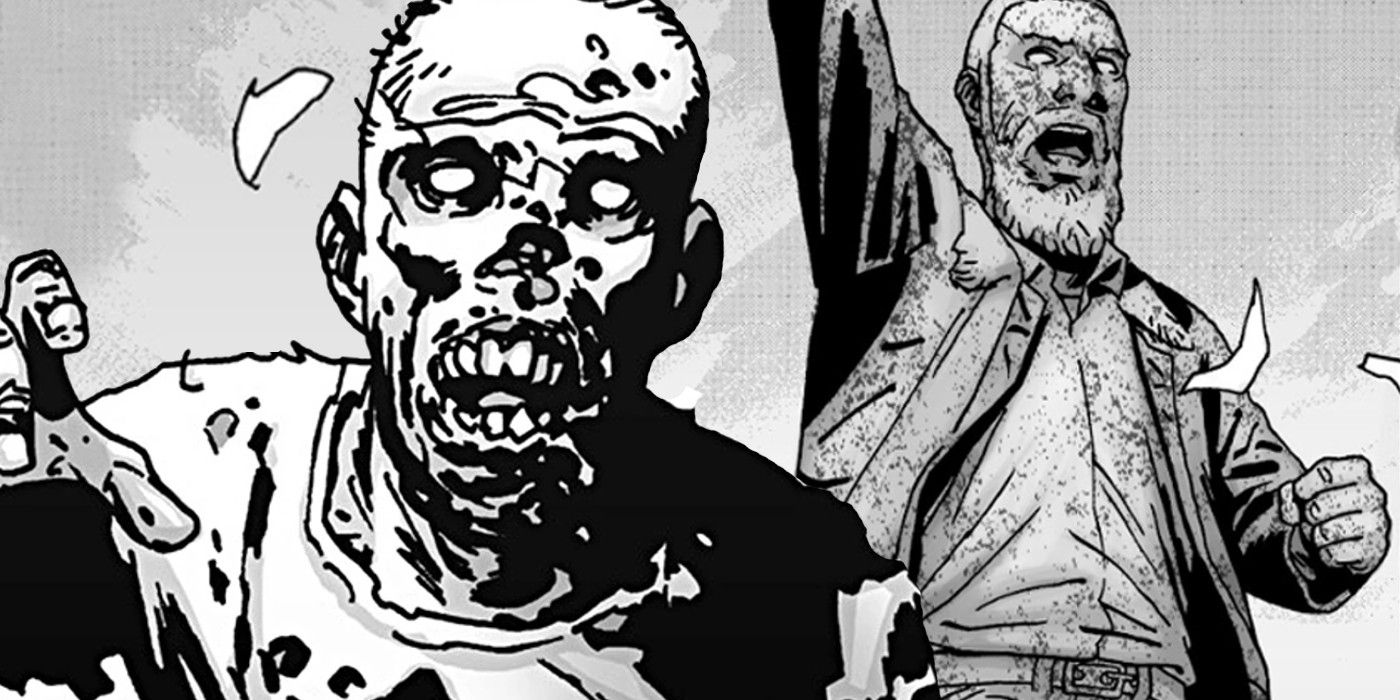
In the creator notes for the issue, Kirkman explains:
So, the basic gist is that this massive zombie attack would have happened in Alexandria, Carl wouldn’t have been shot, but everyone would have come together, as they did in this issue, and overcame the zombies. Rick’s hopeful speech to Carl at the end of this issue would have instead been a rousing speech about hope for the future, and how they were going to put down roots in Alexandria and rebuild civilization there, etc. As the speech winded down, we end on a cool shot of Rick standing up in front of the crowd, then you’d turn the page and Rick would be in the same pose, but now he’s a statue commemorating that speech. An indeterminate amount of time would have passed but the statue would’ve looked old and worn, and we’d start zooming away from the statue, as we got further and further away, we’d see that Alexandria was in ruins, long abandoned and the final image as we cut away, ending the series, was a zombie casually walking by.
Kirkman calls the planned ending “bleak, sad… possibly terrible.”
Walking Dead Was Meant to End with Humanity Falling to the Undead
Rick Became a Hero, But It Didn’t Last
Kirkman calls the planned ending “bleak, sad… possibly terrible.” Typical to the comic series’ sensibilities – where the survivors never find out what caused the zombie apocalypse – the moment wouldn’t have offered absolute, definitive proof that none of humanity survived, but that was very much the implication. Kirkman clarifies:
The idea was that Alexandria was successful enough for Rick to live out his life there and have a statue erected in his honor, but ultimately… the city fell and the scourge of the zombie apocalypse just… continued on. So, we’d leave readers with the idea that no matter what people did… the zombies win. I know, right?
Kirkman also clarifies that one of the benefits of the ending was its ability to act as a floating concept which could believably follow any speech by Rick, allowing the series to keep rolling but with a clear ending as the goal when the time eventually came. “A speech that transitions to a statue of Rick?” Kirkman comments, “Eh… I could do that any time.” It was this fact which saved fans from such a bleak ending – Kirkman says he kept pushing the ending back to tell more of Rick’s story, gradually realizing that the death of humanity wasn’t a satisfying ending to the story he was telling.
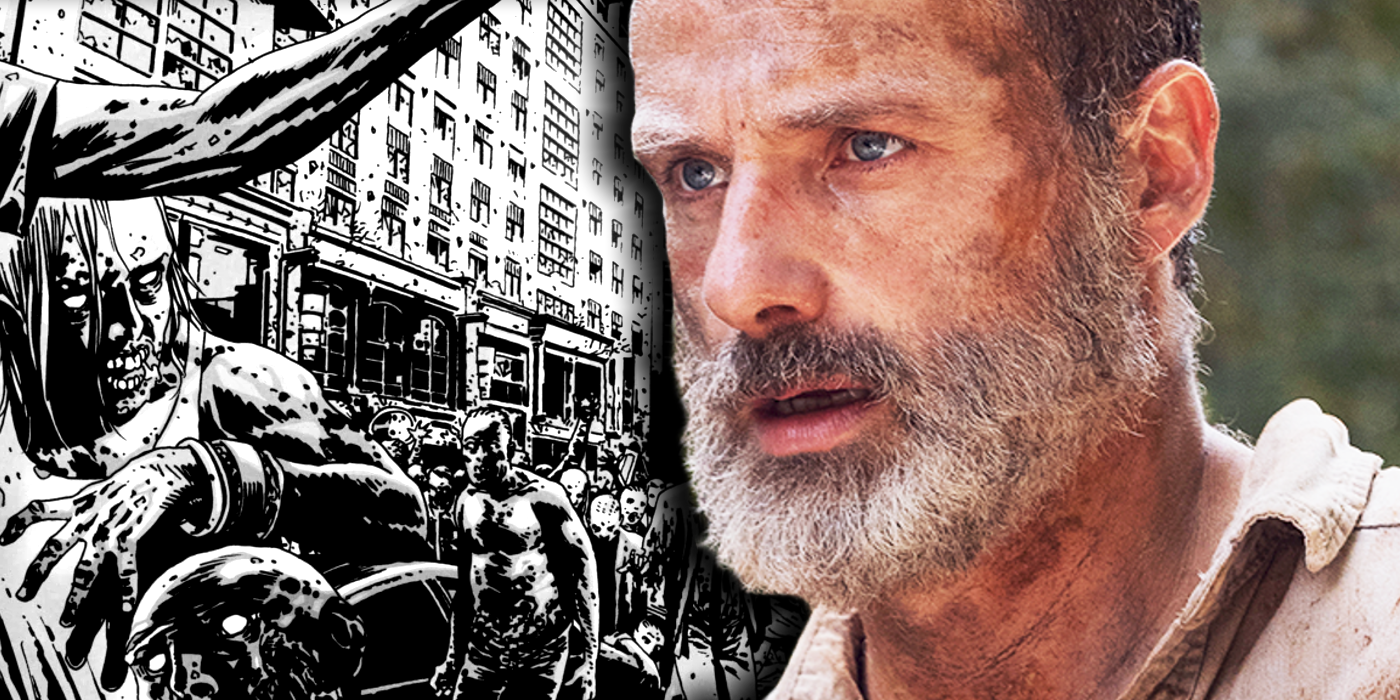
Walking Dead’s Ending Basically Guarantees a Second Zombie Outbreak
The Walking Dead has a hugely satisfying ending that ties up a lot of loose threads, but one unaddressed threat spells disaster for the survivors.
Despite this change, Kirkman was sure enough about where he was heading to tell Andrew Lincoln (who plays Rick in the Walking Dead TV adaptation) and Greg Nicotero (executive producer and director of same) this ending. Kirkman notes, “they were nice enough to pretend it was cool.”
The Walking Dead ‘s actual ending takes place after a 25-year time jump, revealing that humanity has effectively beaten the zombie outbreak and turned Rick into a folk hero.
Walking Dead’s Actual Ending Explained
Rick’s Statue Ends Up as a More Complicated Symbol
The original Walking Dead comic series actually ended with issue 193 – a surprise conclusion that shocked fans with a major time-jump forward, depicting an adult Carl living in a rebuilt society. The fact that Kirkman conceived of the ending with issue 50 and intended it for around issue 84 shows how good his instincts were that the story wasn’t actually over, given these issues aren’t even halfway through the epic of Rick’s group of survivors.
The actual ending takes place following Rick’s murder by Sebastian Milton – the spoiled son of former Commonwealth ruler Pamela Milton, who lost power due to Rick’s more egalitarian vision for humanity’s survivors. The narrative then jumps forward 25 years later, revealing a vastly expanded Commonwealth. Zombie numbers have dwindled, and the Commonwealth’s security measures mean that its citizens live in safety, with the younger generation only learning about the undead in classrooms. Now living with his family, Carl has become something of a loner, feeling deeply bitter about the way humanity is forgetting its darkest hour and simplifying his father’s legacy.
1:42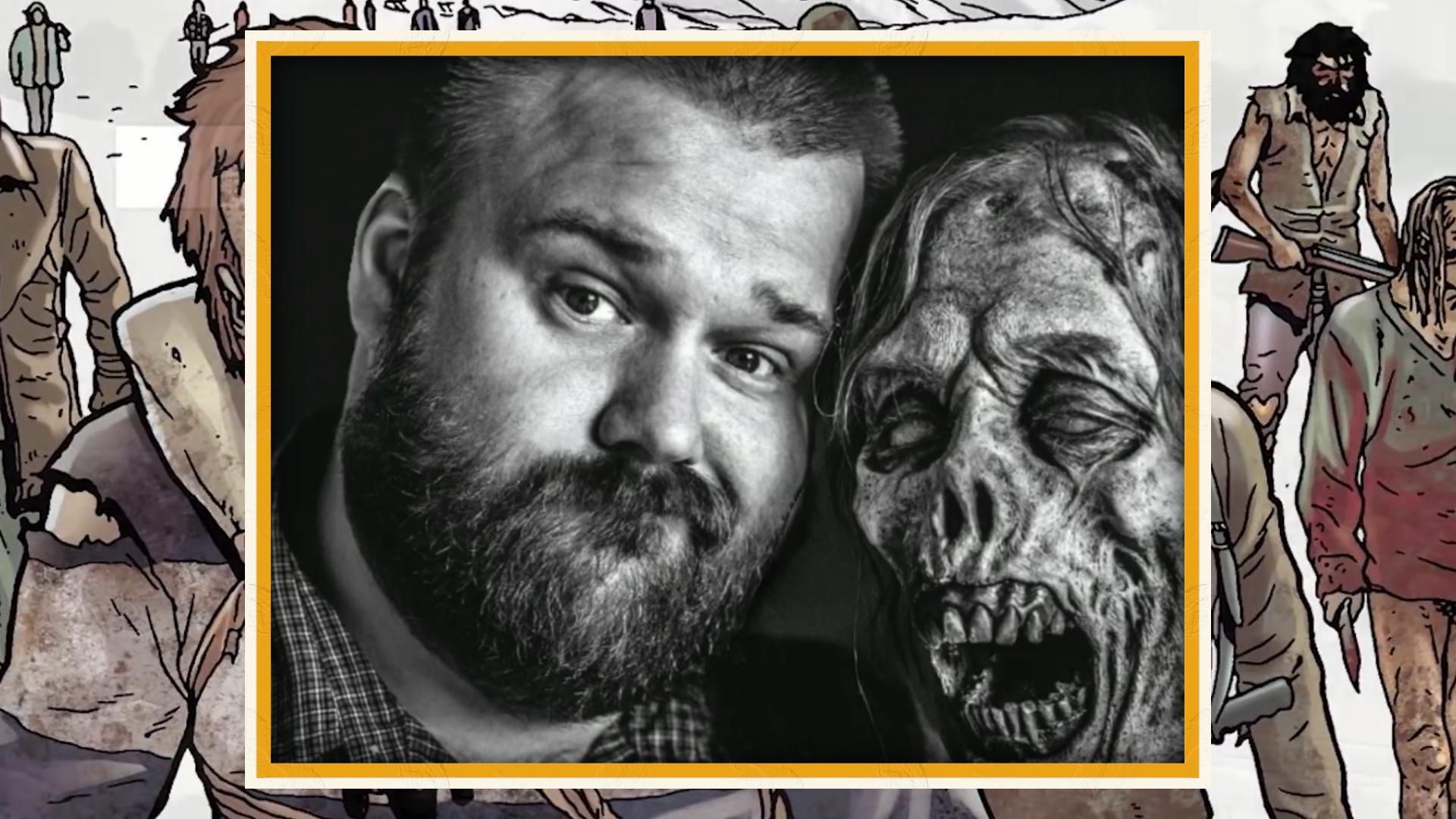
“It’s a Bit Much for Me, Frankly”: Even Walking Dead’s Creator Thinks the World’s Most R-Rated Zombie Series Is Too Extreme
While The Walking Dead doesn’t pull many punches with its undead apocalypse, there’s one zombie series that even creator Robert Kirkman avoids.
The comic reveals the fate of various characters – Michonne has become the Commonwealth’s most respected judge, Maggie is the president of the Commonwealth, and Negan remains in a self-imposed exile – and ends with Carl reading his daughter the story of Rick’s adventures. Crucially, Rick’s statue does still exist in this ending, with the survivors’ former leader acting as a cultural figure. However, Carl feels that the cultural image of Rick is overblown and exaggerated in the wrong ways, especially in how it presents the zombie outbreak as a thing of the past. While the issue ends with the suggestion of humanity having firmly reestablished itself, Carl still fears that growing complacency towards the undead could result in disaster.
The Walking Dead is about what humans are capable of once life is once again ruled by necessity, but Kirkman’s original ending would have betrayed that idea.
Walking Dead’s Actual Ending Is Better
Humanity’s Survival Has a Very Specific Meaning
While Kirkman’s originally-planned ending for The Walking Dead is stunning and bleak, it would ultimately have gone against the series’ message. The back of The Walking Dead comics was emblazoned with a short paragraph driving home its main theme, and issue 193 reveals that this text is emblazoned on the base of Rick’s statue in-world, again emphasizing its importance to the series:
How many hours are in a day when you don’t spend half of them watching television? When is the last time any of us really worked to get something that we wanted? How long has it been since any of us really needed something that we wanted? The world we knew is gone. The world of commerce and frivolous necessity has been replaced by a world of survival and responsibility. An epidemic of apocalyptic proportions has swept the globe, causing the dead to rise and feed on the living. In a matter of months society has crumbled, no government, no grocery stores, no mail delivery, no cable TV. In a world ruled by the dead, we are forced to finally start living.
The paragraph emphasizes that The Walking Dead is about what humans are capable of once life is once again ruled by necessity, and this is a theme the series remains loyal to from beginning to end. The survivors’ determination, mercy, and cooperation are held up as the key attributes to survival, while villains like Negan and the Governor demonstrate the selfishness, brutality and need for control that the worst people are reduced to when life gets hard. In the final issue, it’s revealed that the time before the Commonwealth’s expansion is known as the Trials, with society seeing it as a period that tested humanity to its limits and ultimately produced a better world.
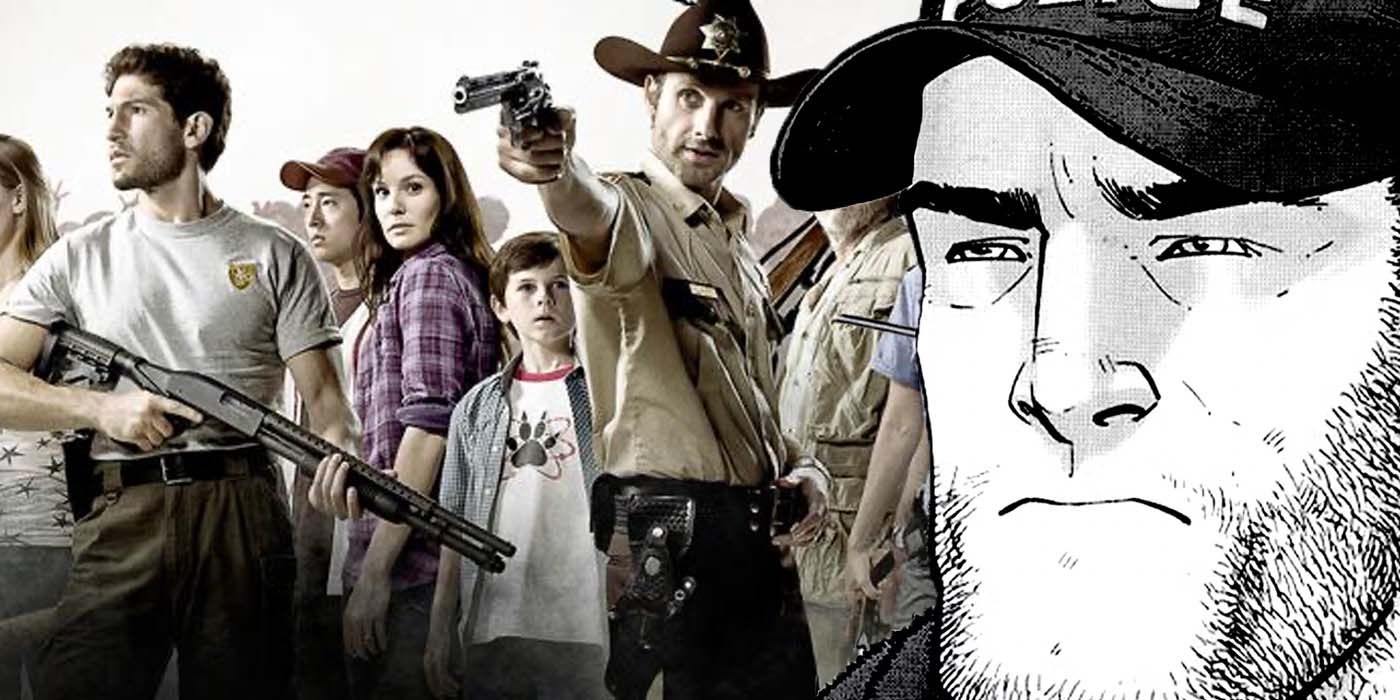
Walking Dead’s Creator Originally Intended for Shane to Kill Rick, with Carl Becoming the Main Character
The Walking Dead nearly had a different first big villain in the comic books, as Robert Kirkman explained Shane was almost given an even darker role.
That meaning would have been betrayed by an ending where humanity totally died out, as it would have suggested that all the positive traits Rick’s group were able to summon were ultimately no superior to Negan’s depravity or the Governor’s fascism: each would have been a failed system which desperate humans embraced for a nonexistent chance of survival. The Walking Dead‘s ultimate ending makes far more of a distinction, making it clear that Rick’s mercy and cooperation is the only way that humanity has a future, while also teasing that once the hard times are over, humanity may not be capable of continuing to prioritize these qualities.
Walking Dead Got the Ending It Deserved
Rick’s Journey Is an Epic About the Best and Worst of Humanity
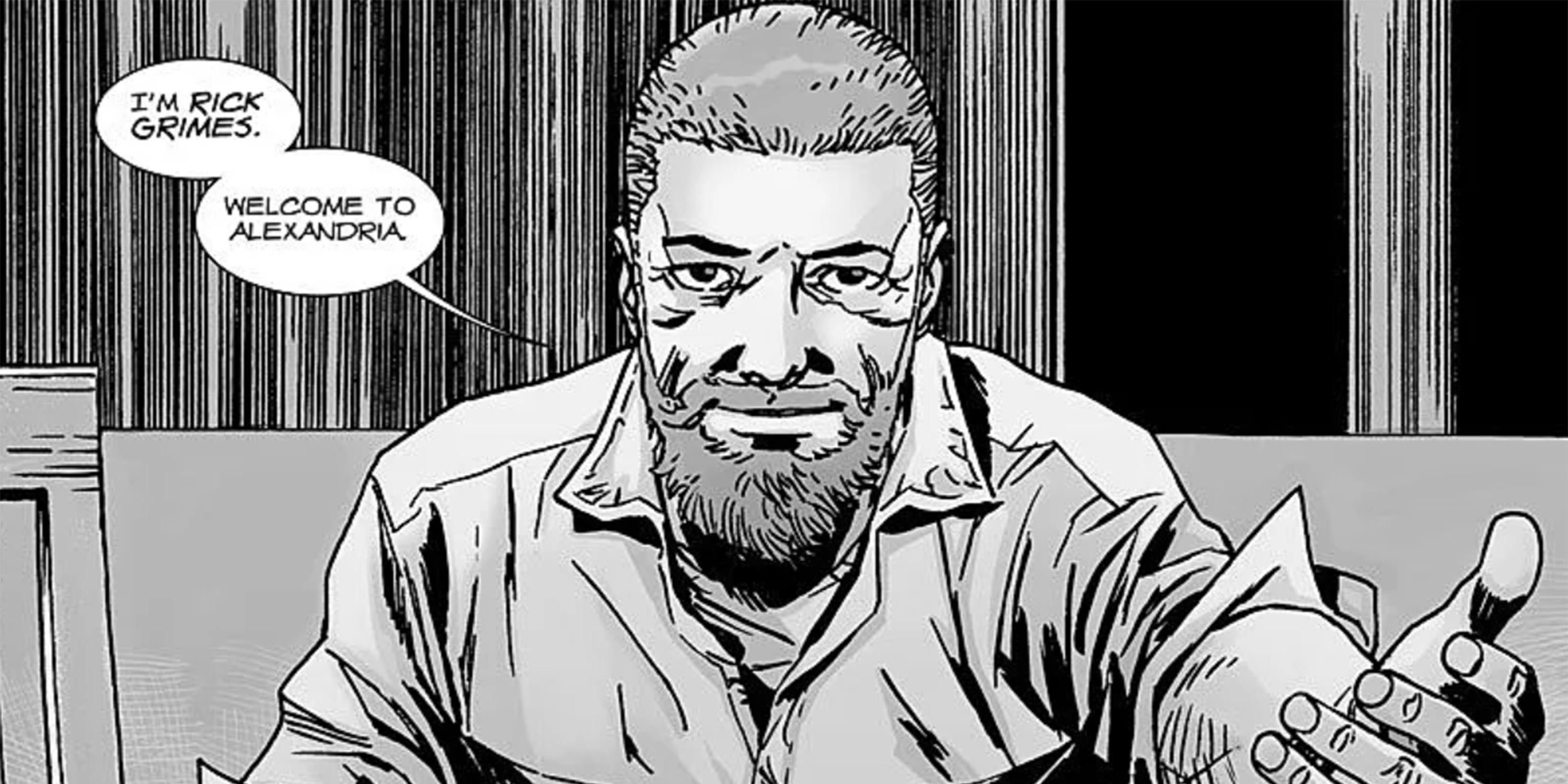
Ultimately, The Walking Dead‘s actual ending is far more meaningful. It not only asks hard questions of the franchise’s core ideas, but is also more ambitious as speculative fiction, as readers tour this new world and see what humanity has accomplished 25 years after Rick’s death.
The Walking Dead Deluxe #84 is available now from Image Comics.
It also means that the series begins with Rick waking up in hospital and ends with his death, fully turning it into the story of how his efforts helped lead humanity from disaster to a second chance – albeit a chance that is in no way guaranteed, especially if future generations fail to learn the lessons of The Walking Dead.
